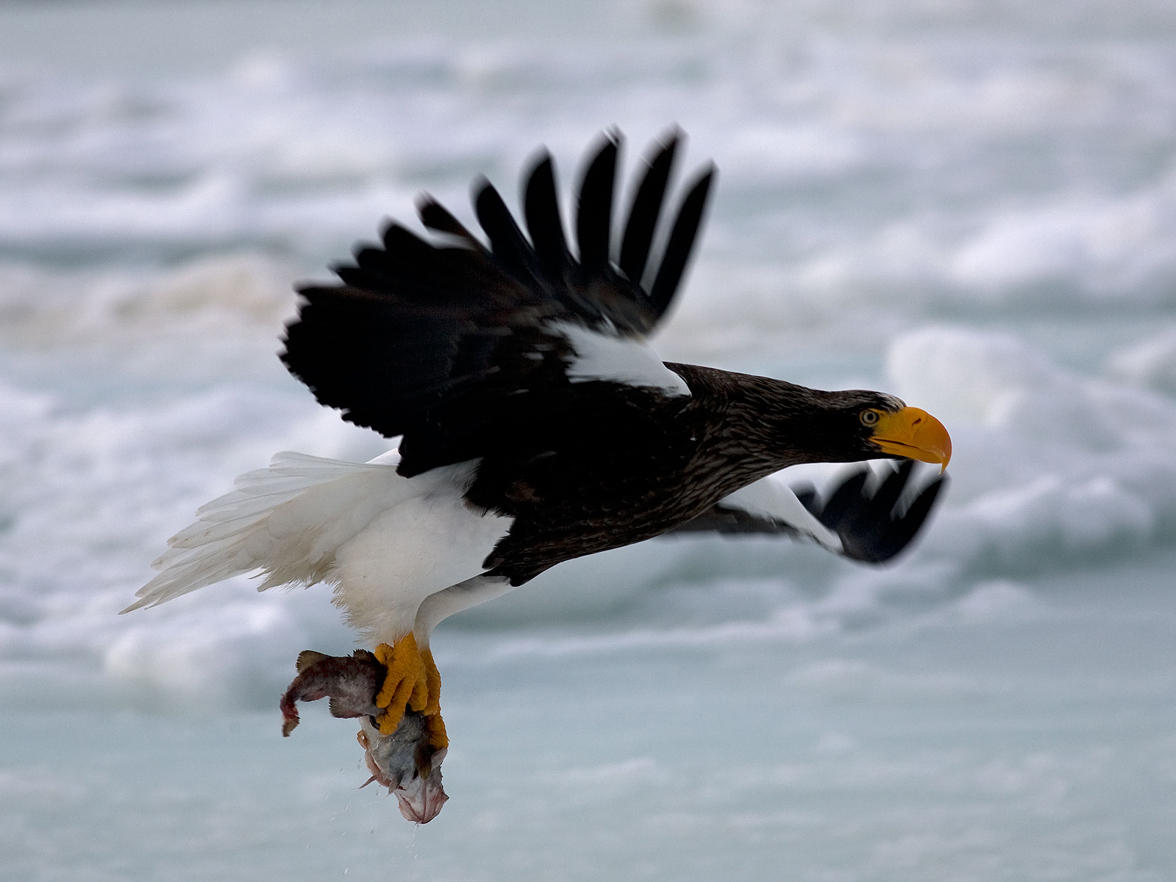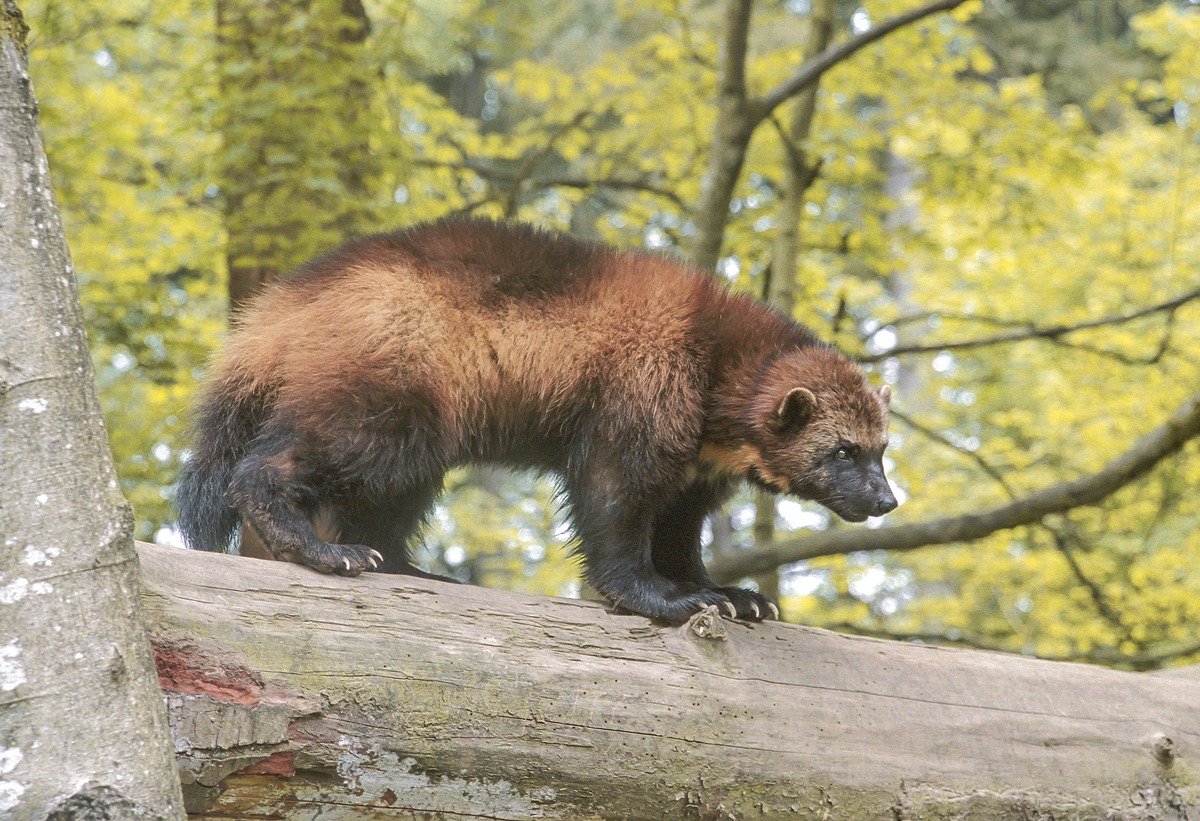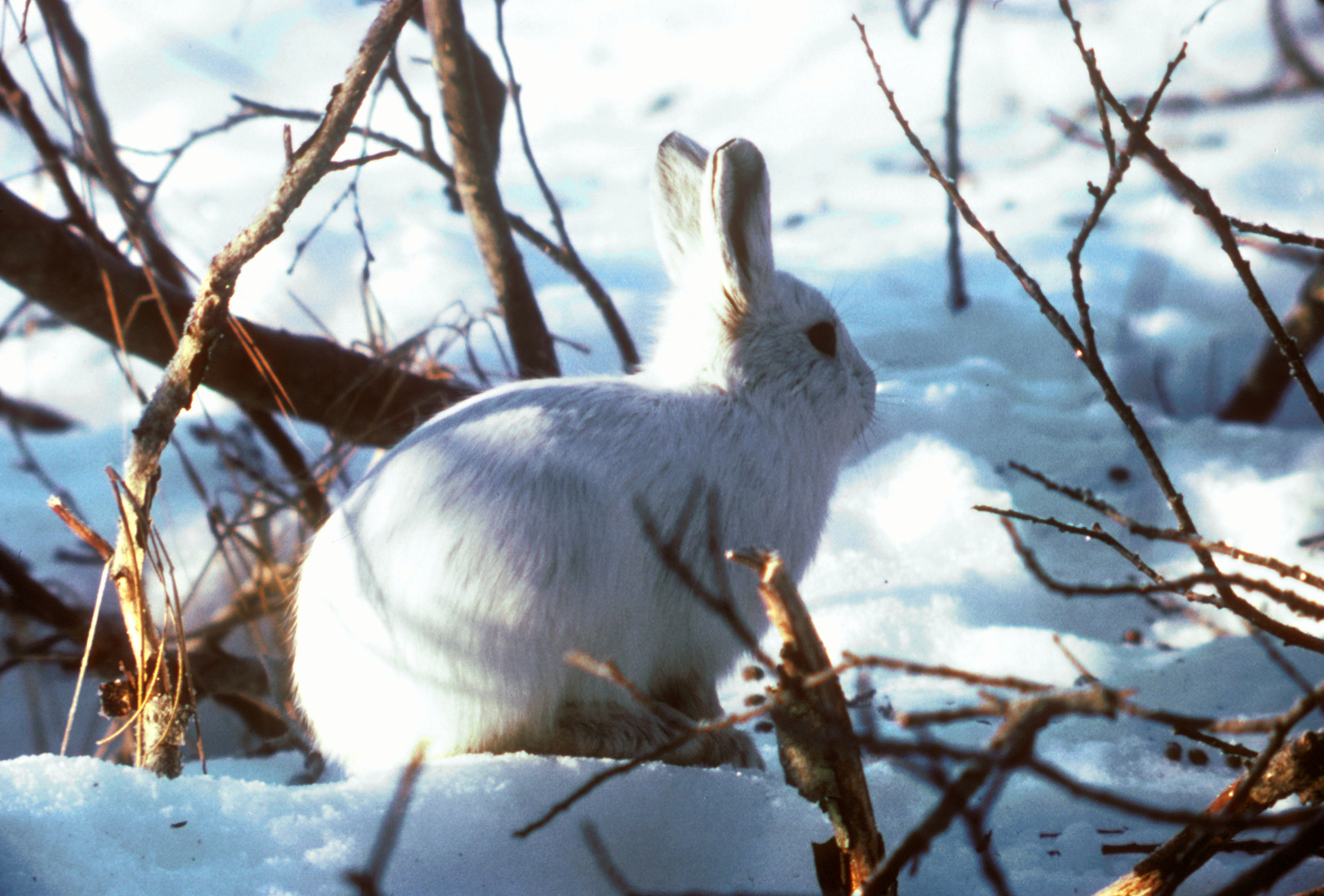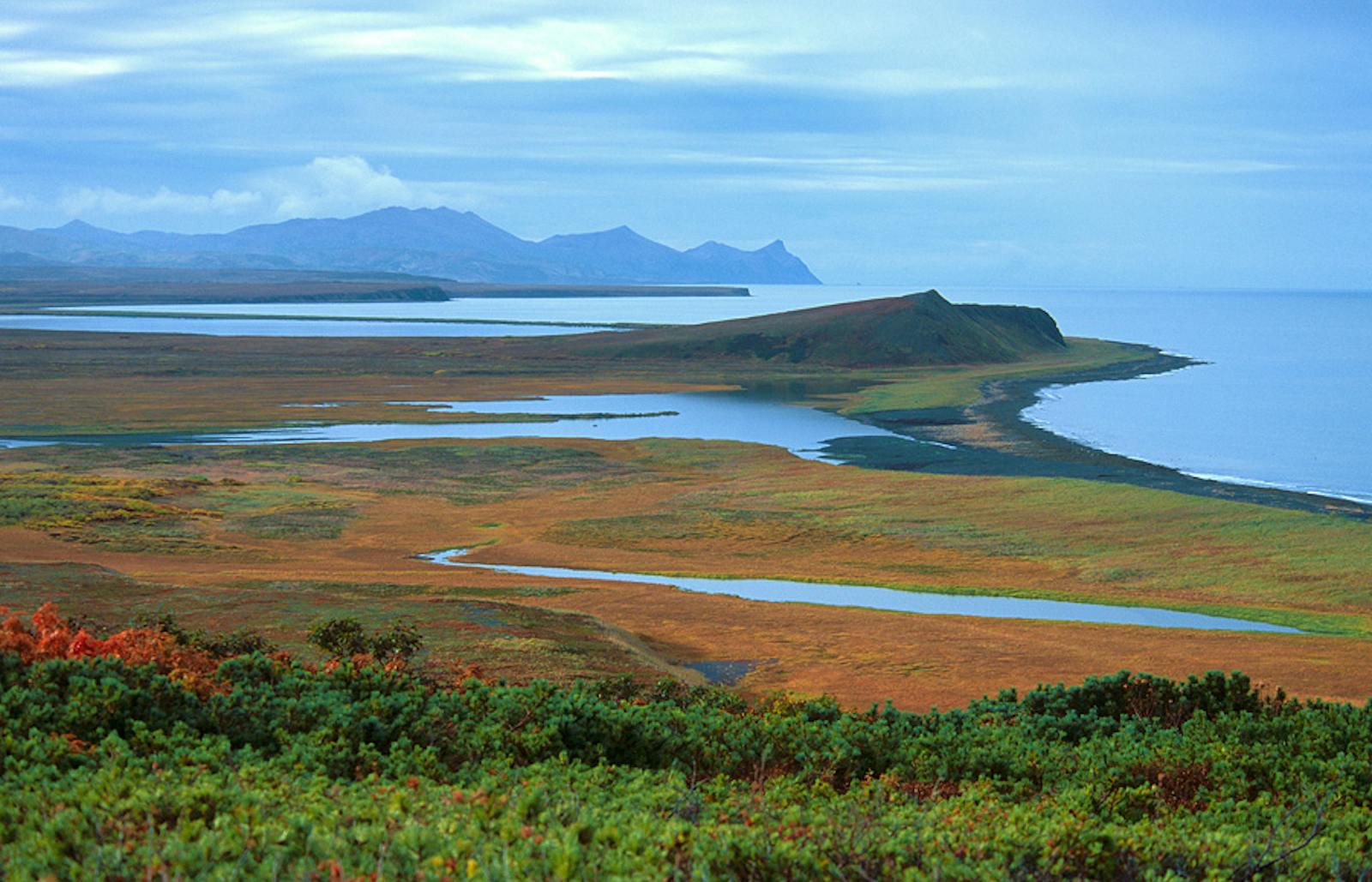Russian Bering Tundra
The ecoregion’s land area is provided in units of 1,000 hectares. The conservation target is the Global Safety Net (GSN1) area for the given ecoregion. The protection level indicates the percentage of the GSN goal that is currently protected on a scale of 0-10. N/A means data is not available at this time.
Bioregion: East Eurasian Coastal Tundra (PA5)
Realm: Subarctic Eurasia
Ecoregion Size (1000 ha):
47,534
Ecoregion ID:
779
Conservation Target:
93%
Protection Level:
1
States: Russia
The Russian Bering Tundra ecoregion contains distinctive vegetation known as Beringian woodland—thickets of low Siberian dwarf-pine forest and pockets of tundra rich with lichen. Thousands of lakes and depressions create a haven for breeding birds and the coastline boasts haul out areas and breeding rookeries for walrus. Millions of seabirds nest on the isolated cliffs.
.jpg)
The flagship species of the Russian Bering Tundra ecoregion is the spoon-billed sandpiper. Image credit: Creative Commons
The ecoregion stretches between the Kolyma Mountains to the west, the Bering Sea coast to the east, and the Kamchatka peninsula to the south. The climate of the region is subarctic, influenced by the Pacific monsoon. The average annual temperature is around -7°C, average monthly temperatures are -19.5–11.5°C and there is about 336 mm of precipitation per year, peaking in January and August.
The southernmost part of the ecoregion is subject to discontinuous permafrost, the remainder to permanent permafrost. Two vertical vegetation belts occur: green alder (coastal areas) or Siberian dwarf pine thickets (inland) from hill bases to 600–800 m above sea-level followed by alpine tundra 600–1,000 m and bare rock above. Dahurian larch is found in areas with Siberian dwarf pine but becomes scarce towards the coast. Alpine buckler fern is a characteristic ground species where green alder grows, false lily of the valley in areas of Siberian dwarf pine.

Steller's sea eagle. Image credit: Creative Commons
On windward slopes, and in frost pockets, patches of lichen-rich tundra vegetation are commonly found, particularly toward the north. Because much of the river flow in the ecoregion comes from snowmelt there are large floodplains that become seasonally inundated and the rest of the year contain thousands of small lakes.
Here, narrowleaf willow, Japanese fantail willow, and green alder grow in thickets with redcurrant, blueberry, and prickly rose. Floodplain levels rise in distinctive terrace-like formations along riverbeds. Endemic plants include Gastrolychnis soczaviana, Taraxacum korjakense, Tephroseris schistose, Oxytropis kamtschatica, and Cardamine victoris.
Wapiti and wild reindeer are common, alongside brown bear, wolf, wolverine, mountain hare, and arctic ground squirrel. Spotted seal and walrus haul out along the coastline. In winter, sand and dust are blown away from steep lake shores and deposited in ‘Alasy’ (depressions caused by thawed areas of permafrost). This causes early spring snowmelt, forming oasis of feeding habitat for migrating birds.

Wolverine. Image credit: William F Wood, Creative Commons
The Mainopyl’ginsky mountain range reaches the coast, forming rocky fjords and capes where walrus and seabirds breed. For example, Cape Otvesnyrocky, southeast of the port of Beringovsky, has colonies of an estimated 600,000 common and Brunnich’s guillemots. Important populations of sandhill crane, emperor goose, Kittlitz’s murralet, ivory gull, the endangered far-eastern curlew, great knot, and the critically endangered spoon-billed sandpiper rely on the ecoregion.
Large parts of the ecoregion maintain intact habitat, but coal and gold mining are major industries. Reindeer herding, fishing and hunting are also important. Protected areas cover about 9% of the ecoregion, including the Koryak State Nature Reserve with its spectacular stopover sites for geese and ducks and endemic subspecies of snow sheep. International agreements protecting migratory seabirds have been made with Japan, the United States, the People’s Republic of Korea, and the Republic of Korea.

Arctic hare. Image credit: Creative Commons
The introduced American mink, Norway rat, and red fox cause problems, displacing otter populations and eating bird eggs. Poaching and trophy hunting have impacted brown bear and snow sheep populations while illegal hunting of sea birds and egg collection continues along the coast. Prospecting and plans for silver, gold, and coal mining continues.
The priority conservation actions for the next decade will be to: 1) increase the connectivity between protected areas; 2) protect breeding seabird colonies from illegal egg collections and introduced species; and 3) prevent habitat damage and pollution resulting from mining operations.
Citations
- Joint Research Centre of the European Commission. 2019. The Digital Observatory for Protected Areas (DOPA) Explorer 4: Bering Tundra. [Online]. [Accessed 19th November 2019]. Available from: https://dopa-explorer.jrc.ec.europa.eu/ecoregion/81102
- Andreev, A.V. 2004. Wetlands in Russia, Volume 4: Wetlands in Northeastern Russia. Wetlands International–Russia Programme. Moscow: KMK Scientific Press.
- Qian, H., Krestov, P., Fu, P., Wang, Q., Song, J-S. and Chourmouzis, C. 2003. Phytogeography of Northeast Asia. In: Kolbek, J., Srutek, M. and Box, E E.O. eds. Forest Vegetation of Northeast Asia. Dordrecht: Springer. pp. 51-91.

.png?auto=compress%2Cformat&w=300)

